Caryn’s Thoughts
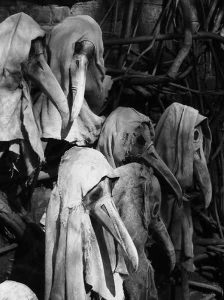
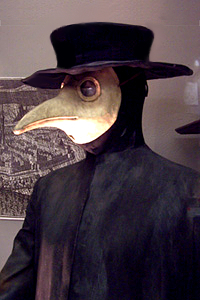 Imagine, waking up from a feverish delirium, to find yourself staring into the face of a doctor who looked like some type of bird, and a scary one at that. When people are delirious and feverish, they are already not in their right mind, so looking at the man, who looked like a giant hawk, could be…well, frightening. The poor sick patient, might have believed that they had been abducted by aliens.
Imagine, waking up from a feverish delirium, to find yourself staring into the face of a doctor who looked like some type of bird, and a scary one at that. When people are delirious and feverish, they are already not in their right mind, so looking at the man, who looked like a giant hawk, could be…well, frightening. The poor sick patient, might have believed that they had been abducted by aliens.
Medicine has come a long way over the centuries. Long ago, physicians in Europe thought that diseases were caused by “bad air.” Scientists like Louis Pasteur, Robert Koch, and Joseph Lister hadn’t yet come up with the scientific proof of the germ theory of disease. Sometimes, it just makes you wonder how anyone managed to survive in those days. Still, the doctors did know that somehow they needed to protect themselves, be it from the “bad air” or germs that they didn’t even know existed. I guess they figured that “when in doubt…protect yourself” first. It was good advise then and good advise now. A healthcare worker, be it doctor, nurse, cna, or caregiver, cannot be of any use to their patient, if they get sick too.
So, to safeguard themselves against miasma, which was the name they gave to this “bad air” and since the doctors then didn’t know about the kinds of gear that is available these days, the doctors donned a curious accessory while treating sickly patients…a mask with a long, bird-like beak, which was stuffed with dried flowers, herbs, and spices. The gear was used during the Carnival of Venice, so some people might recognize it as the “plague doctor” costumes, but they probably wouldn’t know that, with the costumes were an exaggeration, this type of gear was really used during plagues in the 17th century.
It is thought that doctors accepted this type of mask, thanks in part to the Black Death, which ravaged the Middle East, Asia, and Europe during the 14th century, but medical historians say it wasn’t invented until three  centuries later, when a 16th century French doctor named Charles de Lorme likely designed what could be described as one of history’s earliest hazmat suits during later waves of the plague, and it was very similar to these. I’m sure they did the best they could, but my guess is that is was sorely inadequate. The de Lorme suit consisted of “a full head-to-toe protective garment, modeled after a soldier’s canvas gown which went from the neck to the ankle. The over-clothing garment, as well as leggings, gloves, boots, and a hat, were made of waxed leather. The garment was impregnated with similar fragrant items as the beak mask.”
centuries later, when a 16th century French doctor named Charles de Lorme likely designed what could be described as one of history’s earliest hazmat suits during later waves of the plague, and it was very similar to these. I’m sure they did the best they could, but my guess is that is was sorely inadequate. The de Lorme suit consisted of “a full head-to-toe protective garment, modeled after a soldier’s canvas gown which went from the neck to the ankle. The over-clothing garment, as well as leggings, gloves, boots, and a hat, were made of waxed leather. The garment was impregnated with similar fragrant items as the beak mask.”
These days, our healthcare workers, who are working with serious diseases, such as Covid-19, wear gear that is much more capable of protecting them. Healthcare workers like my friend, Nurse Practitioner, Angela Booth might look like they are wearing…well, almost bunkers, like a firefighter wears, with the exception of the heavy oxygen, of course. Still, the gear they are wearing is highly sophisticated and is much better able to protect them from the disease, than gear used to be, and anyone who has friends or family in the healthcare industry, can be thankful for that. For patients, it might still be scary to see the doctor or nurse dressed that way.
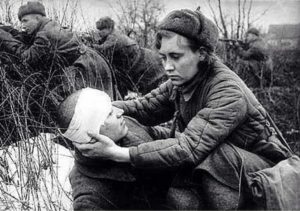 When Natalia Peshkova was a girl in high school, during the early years of World War II, women were not allowed to join the Russian Army. Nevertheless, the women of Russia wanted to help, just like women from most of the Allied nations. As the war went on, the need for soldiers brought women into the draft…like it or not. Peshkova found herself recruited right out of high school, and at the age of 17, she was set to be a combat medic.
When Natalia Peshkova was a girl in high school, during the early years of World War II, women were not allowed to join the Russian Army. Nevertheless, the women of Russia wanted to help, just like women from most of the Allied nations. As the war went on, the need for soldiers brought women into the draft…like it or not. Peshkova found herself recruited right out of high school, and at the age of 17, she was set to be a combat medic.
Things were tough in the arena Peshkova found herself in. The poorly equipped unit was faced with weapons that continuously malfunctioned…not a good thing to defend yourself with. Peshkova’s stint in the Russian army was filled with constant disease, starvation, and even the loss of a boot to a hungry horse, while she slept. To say the least, life in the Russian army was tough.
Despite the hardships, Peshkova did her duty as a combat medic, protecting and helping soldiers that were wounded on the front lines as much as she could. Her training taught her to protect wounded soldiers from the front and get them safely to hospitals, often placing herself in possible harm’s way. While she was trained to apply first aid, her main duty was always to remove wounded men from the front line. Trying to do first aid on the front lines was a dangerous maneuver for both soldier and medic. Peshkova was wounded three times for her efforts, but she had a kind of strength and determination that was unmatched in the field, and she always returned to the front when she had healed. I’m sure many people thought she was half crazy.
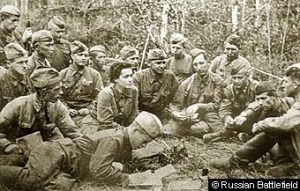
At one point, Peshkova got separated from her unit, finding herself behind enemy lines when the Germans took over territory previously held by the Russians. She had to act fast, so she disguised herself, while also hiding her weapon, because if she discarded it, she would have been executed by her own military. She finally made it back to her unit and survived three years on the front lines. She rose through the ranks to become Sergeant Major, and was then given political education duties that finally relived her from life on the front lines. Natalia Peshkova was truly one of a kind, and was awarded the Order of the Red Star for Bravery.
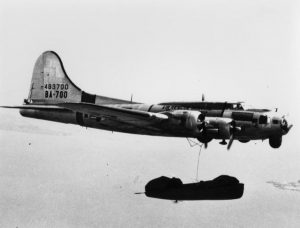 Built in Seattle, Washington by Boeing, the B-17G, which was later converted to a B-17H for use as an emergency air-sea rescue plane. It was equipped with a Higgins A-1 lifeboat attached to the lower fuselage. The plane and crew including Pilot, 1st Lieutenant William C Motsinger; Co-Pilot, 2nd Lieutenant Robert W Ball; Crew, 1st Lieutenant Rollin C Marsh; Engineer, Captain Norman E Zahrt; Navigator, Technical Sergeant Robert W Conger; Gunner, Staff Sergeant Gerard J Doody; Crew, Staff Sergeant Charles J Parkins; Crew, Sergeant Charles Edward Hurn; Crew, Sergeant Elliott Leroy Griffin; and Crew, Sergeant Otis E Anderson Jr; was assigned to the 20th Air Force, 4th Emergency Rescue Squadron. The plane was given no known name or nose art, which happened more than people knew, but it had a Radio Call Sign of “Jukebox 21.”
Built in Seattle, Washington by Boeing, the B-17G, which was later converted to a B-17H for use as an emergency air-sea rescue plane. It was equipped with a Higgins A-1 lifeboat attached to the lower fuselage. The plane and crew including Pilot, 1st Lieutenant William C Motsinger; Co-Pilot, 2nd Lieutenant Robert W Ball; Crew, 1st Lieutenant Rollin C Marsh; Engineer, Captain Norman E Zahrt; Navigator, Technical Sergeant Robert W Conger; Gunner, Staff Sergeant Gerard J Doody; Crew, Staff Sergeant Charles J Parkins; Crew, Sergeant Charles Edward Hurn; Crew, Sergeant Elliott Leroy Griffin; and Crew, Sergeant Otis E Anderson Jr; was assigned to the 20th Air Force, 4th Emergency Rescue Squadron. The plane was given no known name or nose art, which happened more than people knew, but it had a Radio Call Sign of “Jukebox 21.”
B-17H Flying Fortress Serial Number 43-38882, aka Jukebox 21, took off from Motoyama Number 1 Airfield on Iwo Jima, on July 25, 1945, on a night search mission for F4U Corsair 81319 that crashed the day before near Arai at roughly over Lat 34° 35′ N, Long 137° 35′ E on the southern coast of Honshu, Japan. The weather was good, and yet Jukebox 21 was lost, without making a distress signal. That fact made the circumstances of the crash hard to figure, and only known when the B-17 failed to return. The crew was officially listed as Missing In Action, and later as killed in action.
The B-17 flew over Maisaka near the Benten Jima bridge, flying northward at an altitude of roughly 984 feet. Crossing the coast, 75mm anti-aircraft guns on the south side of the highway at Benten Jima opened fire on the bomber. Jukebox 21 was hit by anti-aircraft fire, one of the engines began smoking as the plane flew northward, then attempted to circle to the west over Lake Hamana, then southward. Trailing black smoke, one of the engines on the right wing broke off before the bomber crashed at Yakute to the northwest of Arai. Jukebox 21 impacted pine trees before crashing into the ground nose first at Yakute, to the northwest of Arai. Immediately after the crash, Japanese civilians ran to the crash site and observed several mounds of debris and fire and observed the rescue boat in the wreckage. There were no survivors. Thirty minutes after the crash, Japanese Keibodan (wartime guards) reached the crash site and extinguished the fire. The bodies of the ten crew were recovered, all badly burned from the fire and no identification was possible. Afterwards, the bodies of the crew were cremated and buried at the nearby Arai crematorium, along with the body of the Corsair pilot that crashed the previous day.

Twelve Allied aircraft participated in a search over two days under the direction of Major Ivan K Mays. No wreckage was located, and all stations and ships were told to be on the lookout for this bomber. On May 22, 1947 US Army investigators visited Arai to investigate the possibilities of any atrocities in connection with the death of this crew, but found none. During their visit, they interrogated Katsumi Kumagai the former Kempei Tai commander for Arai who explained how the B-17 crashed and how the crew’s bodies were recovered, cremated, and buried. Afterwards, the remains of the crew were recovered and transported to the United States for permanent burial. Somewhat strangely, the Japanese placed a memorial to the men of Jukebox 21 at the Jingu-ji Temple in Kosai, Japan.
 Every child, at some point in their academic career, is required to do a science fair project. Some are good, because let’s face it, some students are very good at science…or some kids have parents who can do the project for them. I watched a show recently in which a couple of students were making volcanos for the science fair. I started thinking about some of the science fair projects I did during my own academic career. I really don’t recall ever making a volcano, and I knew that you used baking soda, but that was about all I knew. I suppose it’s possible that one of my teachers made one in our science class, but maybe not too.
Every child, at some point in their academic career, is required to do a science fair project. Some are good, because let’s face it, some students are very good at science…or some kids have parents who can do the project for them. I watched a show recently in which a couple of students were making volcanos for the science fair. I started thinking about some of the science fair projects I did during my own academic career. I really don’t recall ever making a volcano, and I knew that you used baking soda, but that was about all I knew. I suppose it’s possible that one of my teachers made one in our science class, but maybe not too.
I remember several of my own science projects. I think most of us build our solar system…again, some much better than others. If science wasn’t your forte, it just wasn’t. I didn’t mind science, but it wasn’t really the thing I wanted to do with my life either. I just wasn’t inclined to apply myself to the different aspects of science. Nevertheless, I did like the solar system, even now. I find the constellations very interesting. At one time, I could pick them out.
One time, I decided, or rather it was suggested to me, by the neighbor across the alley to build a radio. He was  trained in electronics, and we had a great time building that radio. I think Mom and Dad had just as much fun as we did, because they watched with great interest as we soldered transistors and other components together to make a radio that worked, even if it wasn’t small and cool like a transistor radio, but rather like a jewelry sized army green box. Nevertheless, it worked, and while I didn’t win the science fair, I learned a lot about how a radio worked, and after all, isn’t that the whole purpose.
trained in electronics, and we had a great time building that radio. I think Mom and Dad had just as much fun as we did, because they watched with great interest as we soldered transistors and other components together to make a radio that worked, even if it wasn’t small and cool like a transistor radio, but rather like a jewelry sized army green box. Nevertheless, it worked, and while I didn’t win the science fair, I learned a lot about how a radio worked, and after all, isn’t that the whole purpose.
One of my projects, however, will always be remembered as the the grossest/funniest (now, not then) project I ever did. My poor mom!! I decided to do a project on honey. It seems benign enough, and I did know that honey came from bees. I guess I thought I was going to cut out pictures of bees, but Mom had other ideas. Somehow she managed to talked to a beekeeper, who willingly supplied us with honeycomb, which I thought was very cool. We put it in a baggy so it wouldn’t leak everywhere, and put it on the board we were putting my project 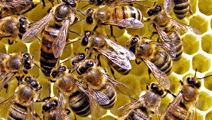 on. That was great, however…the beekeeper also supplied him with 50 or so dead bees to put on the board. They were in a box, and we had to put them in a baggy…or rather my mom had to put them in a baggy. I don’t like bugs…of any kind, and I refused to touch them. In retrospect, I suppose we could have used a spoon or something, but Mom bravely began to pick them up and put them into a baggy…until they started clinging to her. Then, she was just as grossed out as I was. Somehow, I don’t recall how we finally got those wretched, dead bees into their baggy, but somehow we did, and the project was completed. I learned a lot about the making of honey too, and that I never wanted to touch a bee…dead or alive…EVER!!!
on. That was great, however…the beekeeper also supplied him with 50 or so dead bees to put on the board. They were in a box, and we had to put them in a baggy…or rather my mom had to put them in a baggy. I don’t like bugs…of any kind, and I refused to touch them. In retrospect, I suppose we could have used a spoon or something, but Mom bravely began to pick them up and put them into a baggy…until they started clinging to her. Then, she was just as grossed out as I was. Somehow, I don’t recall how we finally got those wretched, dead bees into their baggy, but somehow we did, and the project was completed. I learned a lot about the making of honey too, and that I never wanted to touch a bee…dead or alive…EVER!!!
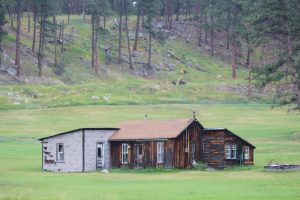 When we think of “ghost towns,” we think of abandoned mining camps, towns that were passed by when railroads or highways went through, and these days, New York City. There are many ways for a town or even a city to die out…most of them are really sad. Sometimes, a town just outlives its usefulness, as was the case during the gold rush. When the gold ran out, the miners moved on or went back east to their homes there. The little town that had provided the supplies, homes, entertainment, and necessary offices, like post office and land offices, is simply not needed anymore. I’m sure that the people of the town held out as long as it made sense, and then they picked up and moved on to some other place that needed things like a general store for supplies. The little town then sat there and slowly slipped into disrepair and decay. When we visit such towns, we see history unfolding before us, and we are usually excited to find such an amazing relic. We can’t wait to explore.
When we think of “ghost towns,” we think of abandoned mining camps, towns that were passed by when railroads or highways went through, and these days, New York City. There are many ways for a town or even a city to die out…most of them are really sad. Sometimes, a town just outlives its usefulness, as was the case during the gold rush. When the gold ran out, the miners moved on or went back east to their homes there. The little town that had provided the supplies, homes, entertainment, and necessary offices, like post office and land offices, is simply not needed anymore. I’m sure that the people of the town held out as long as it made sense, and then they picked up and moved on to some other place that needed things like a general store for supplies. The little town then sat there and slowly slipped into disrepair and decay. When we visit such towns, we see history unfolding before us, and we are usually excited to find such an amazing relic. We can’t wait to explore.
Sometimes, as in the case of New York City, a city is “shut down” to help those within it to recover from something, such as a pandemic. That doesn’t usually happen when a new virus goes through, but it did with  Covid-19. Normally, only the sick people are quarantined, but in this case, the medical experts (and many people would say that I’m using that term loosely), decided to quarantine the well people in the hope of stopping the spread of Covid-19. I can’t say whether that has been a good or a bad thing, but I tend to think it was a bad thing. When a city like New York City, suddenly is completely empty, businesses are shut down, jobs lost, and it didn’t seem to help. Months later, the city is still, for the most part, shut down, and businesses are considering a move to another location, just like the ghost towns of the old west when the mines dried up. The shut down of our cities is a slippery slope, and one that I think needs to be avoided, at all costs. Still, man will tell you that I’m not an expert, and they would be right. I am just a person who sees that our country cannot continue with this shut down much longer. Something has to change…something!!
Covid-19. Normally, only the sick people are quarantined, but in this case, the medical experts (and many people would say that I’m using that term loosely), decided to quarantine the well people in the hope of stopping the spread of Covid-19. I can’t say whether that has been a good or a bad thing, but I tend to think it was a bad thing. When a city like New York City, suddenly is completely empty, businesses are shut down, jobs lost, and it didn’t seem to help. Months later, the city is still, for the most part, shut down, and businesses are considering a move to another location, just like the ghost towns of the old west when the mines dried up. The shut down of our cities is a slippery slope, and one that I think needs to be avoided, at all costs. Still, man will tell you that I’m not an expert, and they would be right. I am just a person who sees that our country cannot continue with this shut down much longer. Something has to change…something!!
While we like to visit ghost towns, we often don’t realize the hardship and heartache that went into turning these places into ghost towns. Just like we have seen in the cities across America, the business shutting down 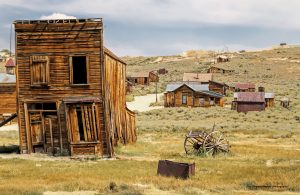 means the loss of a livelihood for millions of people. Depression sets in, and eventually everyone is angry about their rights being stepped on…and it’s not just one group, it’s many. Then, the sad thing is that there emerges a group of people who are…left out. The ones who don’t fit into any of the protesting groups…they are the quiet majority…the ones who usually just go quietly about their daily lives, without hurting anyone. Sadly these are the overlooked ones, and usually the last ones to leave the ghost town, because they are the ones who try to hope for the future. These days, that is much of America. We are just hanging out, waiting for things to get better, so we can get back to normal. Here’s to normal.
means the loss of a livelihood for millions of people. Depression sets in, and eventually everyone is angry about their rights being stepped on…and it’s not just one group, it’s many. Then, the sad thing is that there emerges a group of people who are…left out. The ones who don’t fit into any of the protesting groups…they are the quiet majority…the ones who usually just go quietly about their daily lives, without hurting anyone. Sadly these are the overlooked ones, and usually the last ones to leave the ghost town, because they are the ones who try to hope for the future. These days, that is much of America. We are just hanging out, waiting for things to get better, so we can get back to normal. Here’s to normal.
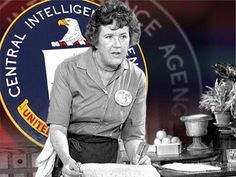 Most of us know Julia Child as a famous chef, who mainly focused on French cuisine, as well as an author of cookbooks, but that is only one aspect of her life. Born Julia Carolyn McWilliams in Pasadena, California on August 15, 1912, she was the daughter of John McWilliams Jr, and Julia Carolyn “Caro” (Weston) McWilliams. She came from wealth as privilege, her dad being a Princeton Graduate and prominent land manager, and her mom being a paper-company heiress. She was the eldest of three children, followed by John McWilliams III and Dorothy (McWilliams) Cousins. Child and her siblings were all unusually tall, and loved outdoor sports. After she graduated, Julia went on to major in history in college, after college took a job as a copywriter for a furniture company in New York City.
Most of us know Julia Child as a famous chef, who mainly focused on French cuisine, as well as an author of cookbooks, but that is only one aspect of her life. Born Julia Carolyn McWilliams in Pasadena, California on August 15, 1912, she was the daughter of John McWilliams Jr, and Julia Carolyn “Caro” (Weston) McWilliams. She came from wealth as privilege, her dad being a Princeton Graduate and prominent land manager, and her mom being a paper-company heiress. She was the eldest of three children, followed by John McWilliams III and Dorothy (McWilliams) Cousins. Child and her siblings were all unusually tall, and loved outdoor sports. After she graduated, Julia went on to major in history in college, after college took a job as a copywriter for a furniture company in New York City.
With the onset of World War II, Julia tried to enlist in military service, but was told that she was too tall to enlist in the Women’s Army Corps (WACs) or in the U.S. Navy’s WAVES…both facts that make no sense to me, and probably would not have been a factor these days. Nevertheless, Julia was declined that chance to serve. 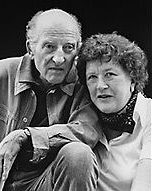 Undeterred, she joined the Office of Strategic Services (OSS) as a typist at its headquarters in Washington but, because of her education and experience, soon was given a more responsible position as a top-secret researcher working directly for the head of OSS, General William J. Donovan. Thus began a career that would lead to being a spy for the Allied forces and have a life changing effect on Julia’s life.
Undeterred, she joined the Office of Strategic Services (OSS) as a typist at its headquarters in Washington but, because of her education and experience, soon was given a more responsible position as a top-secret researcher working directly for the head of OSS, General William J. Donovan. Thus began a career that would lead to being a spy for the Allied forces and have a life changing effect on Julia’s life.
In 1944, she was posted to Kandy, Ceylon (now Sri Lanka). Her responsibilities included “registering, cataloging and channeling a great volume of highly classified communications” for the OSS’s clandestine stations in Asia. Later she was transferred to Kunming, China, where she received the Emblem of Meritorious Civilian Service as head of the Registry of the OSS Secretariat. Asked to solve the problem of too many OSS underwater explosives being set off by curious sharks, “Child’s solution was to experiment with cooking various concoctions as a shark repellent,” a task she did in a bathtub…not much like her cooking in later years. The chemicals were sprinkled in the water near the explosives and repelled sharks…it was a great success and is still in use today. The experimental shark repellent “marked Child’s first foray into the  world of cooking” Child received an award that cited her many virtues, including her “drive and inherent cheerfulness.”
world of cooking” Child received an award that cited her many virtues, including her “drive and inherent cheerfulness.”
While in Kunming, she met Paul Cushing Child, also an OSS employee, and the two were married September 1, 1946, in Lumberville, Pennsylvania. They later relocated to Washington DC. Paul was a New Jersey native who had lived in Paris as an artist and poet. He was also known for his sophisticated palate, and introduced his wife to fine cuisine. Julia had always had a cook in her childhood home, so the idea of cooking was very foreign to her. Still, she was smart, and she began to excel in the art of cooking. It was her cooking that helped her to realize another of her goals…to become an author. Cooking was not a goal is a girl, but it was her later love of cooking that finally gave her the title of writer she had so desired. While Julia and Paul never had children, they lived a long and happy life until his passing in 1994. Then she went on until her own passing in 2004 at the good old age of 91.
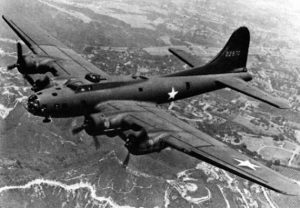
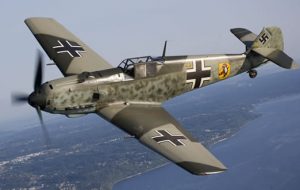 When the B-17 was built, it was designed to be a formidable weapon against the enemy, namely the Nazis and the Japanese. Early on, before long-range fighter escorts came into being, B-17s had only their .50 caliber M2, the B-17s were on their own out there. Still, the B-17 was not defenseless. With those .50 caliber M2s, the crew had the ability to fire at the enemy from every direction…almost. The job of the Messerschmitt fighters was to take down the B-17s. The Messerschmitt fighter planes were designed to break world air speed records. They were also the hope of the Germans to take down the B-17s. Still, there were all those guns to deal with. Luftwaffe fighter pilots agreed that attacking a B-17 combat box formation to encountering a fliegendes Stachelschwein, “flying porcupine,” with dozens of machine guns in a combat box aimed at them from almost every direction. The biggest downfall of the B-17 bombing formation was that they had to fly straight, making them vulnerable to German flak. It was the first line of defense the Germans had when the bombers came in.
When the B-17 was built, it was designed to be a formidable weapon against the enemy, namely the Nazis and the Japanese. Early on, before long-range fighter escorts came into being, B-17s had only their .50 caliber M2, the B-17s were on their own out there. Still, the B-17 was not defenseless. With those .50 caliber M2s, the crew had the ability to fire at the enemy from every direction…almost. The job of the Messerschmitt fighters was to take down the B-17s. The Messerschmitt fighter planes were designed to break world air speed records. They were also the hope of the Germans to take down the B-17s. Still, there were all those guns to deal with. Luftwaffe fighter pilots agreed that attacking a B-17 combat box formation to encountering a fliegendes Stachelschwein, “flying porcupine,” with dozens of machine guns in a combat box aimed at them from almost every direction. The biggest downfall of the B-17 bombing formation was that they had to fly straight, making them vulnerable to German flak. It was the first line of defense the Germans had when the bombers came in.
In a 1943 survey, the USAAF found that over half the bombers shot down by the Germans had left the protection of the main formation. The Germans needed a training plan. The United States developed the bomb-group formation, which evolved into the staggered combat box formation in which all the B-17s could safely cover any others in their formation with their machine guns, making a formation of bombers a dangerous target to engage by enemy fighters. The Messerschmitt fighters were fast, but they could not just fly at the formation. They would be shot down for sure. So, they looked for the bomber that had been hit and had to pull out of formation. Then they would move in for the kill. Moreover, German fighter aircraft later developed the tactic of high-speed strafing passes rather than engaging with individual aircraft to inflict damage with minimum risk. It was a way of not fully engaging the “flying porcupine.” As a result, the B-17s’ loss rate was up to 25% on some early missions. They needed something more to provide a kind of shield against the enemy.
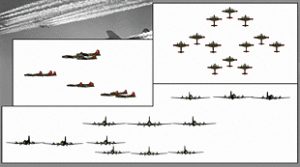
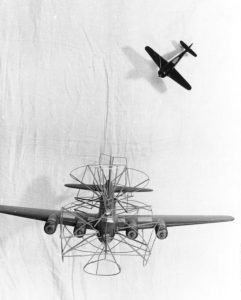
It was not until the advent of long-range fighter escorts (particularly the North American P-51 Mustang) and the resulting degradation of the Luftwaffe as an effective interceptor force between February and June 1944, that the B-17 became strategically potent. They needed the P-15 Mustang to keep the Messerschmitts off of them. So in the end, the German training didn’t do them much good against the “flying porcupine.”

 My future grand nephew, Dylan Herr comes from great stock in the business world. His family has been in the shoe business for three generations. His dad, Rob and mom, Dee Dee own nine Red Wing Shoe Stores in Colorado, and Dylan owns three, including the newest one in Brighton, Colorado. They have been in business since 1970, beginning with his grandpa, Bob Herr. They stores were recently featured by the BBB and their Featured Business of the Week. In that article, they revealed that as of 2020, they are the largest Red Wing dealer in the world. Now, that’s an amazing feat…if you’ll pardon the necessary pun, an amazing feat for the feet. I suspect that my silly pun has quite likely been heard by the Herr family many times before
My future grand nephew, Dylan Herr comes from great stock in the business world. His family has been in the shoe business for three generations. His dad, Rob and mom, Dee Dee own nine Red Wing Shoe Stores in Colorado, and Dylan owns three, including the newest one in Brighton, Colorado. They have been in business since 1970, beginning with his grandpa, Bob Herr. They stores were recently featured by the BBB and their Featured Business of the Week. In that article, they revealed that as of 2020, they are the largest Red Wing dealer in the world. Now, that’s an amazing feat…if you’ll pardon the necessary pun, an amazing feat for the feet. I suspect that my silly pun has quite likely been heard by the Herr family many times before
Dylan joined our family when he and my grand niece Katy Balcerzak became engaged recently. The were also blessed on June 14, 2020 with their first child, a son named Max Robert Herr, and he is just such a cutie!! While Dylan can’t say that his life was ever in the dumps exactly, because he has worked hard to be a success in his dad and grandpa’s footsteps…another almost pun (there seem to be a number of them in this story), having becoming engaged and having a son have to rate very high in the annals of his life history. It’s pretty hard to beat the rush of pride one feels when becoming a parent.
Dylan and Katy are such happy people. They are filled with love for each other, and for their new little son. 
 Their family is such a blessing to the rest of their families, and their happiness is a joy to watch. Dylan seems to have moved into fatherhood with ease and grace, and it’s obvious to anyone who looks at them, that daddy and son love each other very much. It makes me so happy to see Katy’s life so filled with love, and I think Dylan will make a wonderful husband for her. It is obvious to me, that when he looks at her, he is very much in love with our Katy. I am very excited for their future together, and very happy for their current lives that are so filled with joy. Today is Dylan’s birthday. Happy birthday Dylan!! Have a great day!! We love you!!
Their family is such a blessing to the rest of their families, and their happiness is a joy to watch. Dylan seems to have moved into fatherhood with ease and grace, and it’s obvious to anyone who looks at them, that daddy and son love each other very much. It makes me so happy to see Katy’s life so filled with love, and I think Dylan will make a wonderful husband for her. It is obvious to me, that when he looks at her, he is very much in love with our Katy. I am very excited for their future together, and very happy for their current lives that are so filled with joy. Today is Dylan’s birthday. Happy birthday Dylan!! Have a great day!! We love you!!
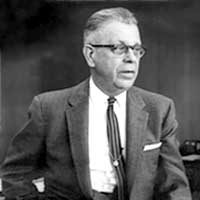 Life was not easy for Percy Lebaron Spencer, who was born to Louis and Lillian (Ottenheimer) Spencer in Howland, Maine on July 19, 1894. His father passed away when he was still a toddler and he was abandoned by his mother soon after. Spencer was brought up by his poverty-stricken uncle and aunt, who barely had enough to get by themselves. When he was seven, tragedy struck again, when his uncle died, leaving him to be the unofficial head of the household, a job he took seriously. Soon after his uncle’s passing, Spencer left school to earn a living and support himself and his aunt.
Life was not easy for Percy Lebaron Spencer, who was born to Louis and Lillian (Ottenheimer) Spencer in Howland, Maine on July 19, 1894. His father passed away when he was still a toddler and he was abandoned by his mother soon after. Spencer was brought up by his poverty-stricken uncle and aunt, who barely had enough to get by themselves. When he was seven, tragedy struck again, when his uncle died, leaving him to be the unofficial head of the household, a job he took seriously. Soon after his uncle’s passing, Spencer left school to earn a living and support himself and his aunt.
Spencer as a very curious boy, who always wanted to know how things worked, once spending days exploring a log hauler truck that broke down in front of his house, trying to figure out how it worked. That curiosity never left him, and was at the root if his inventor’s mind. Between the ages of 12 and 16 he worked at a spool mill. He left the mill upon learning about an opening at a paper factory that was going to be run on electricity. Living in a remote town, an electrically run factory was exciting and new, and something that Spencer’s mind could not resist. This was a new concept in the remote town where he lived. He didn’t know much about electricity, so he learned as much as he could about it and applied for the job of wiring the plant. He was one of three people chosen for the job. Which is amazing to me, because he was not a trained electrician, but then I guess no one else was either. Still, he had no training of any kind, and learned his job…on the job.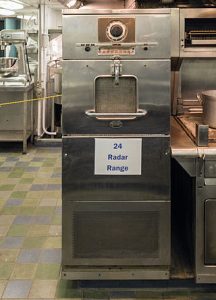
At the age of 18, Spencer’s took another turn, but this one was not a tragedy. He joined the United States Navy and it was there that he learned about wireless and radio technology. Always highly motivated, Spencer learned and gained expertise in a number of fields such as trigonometry, calculus, chemistry, physics, and metallurgy by reading extensively about them. He also became an expert in radar tube design, and worked at a company called Raytheon as the chief of the power tube division. Spencer was a great asset to Raytheon, and his expertise helped the company win a major contract from the US government to produce magnetrons for radar equipment which was became invaluable in the second world war. Under his leadership, the division expanded from a mere 15 employees to more than 5000 employees and productivity was also largely improved.
Probably the most commonly used of Spencer’s inventions in modern times, and one many people might not know was his invention, was the microwave oven. What household doesn’t have one? This invention was purely coincidental, though. One day while working at the plant, he crossed an active radar set when he noticed that the candy in his pocket had suddenly melted. His curiosity was immediately heightened, and he set about finding out how that had happened. He decided to experiment further by testing out different types of foods, such as unpopped kernels of corn. To his surprise and delight, they began to pop. Unlike others who had experienced the same, Spencer was keen to learn more about it.
Spencer began to research further, and documented his findings. Then he filed for and was granted a patent in  1945. In 1947, he produced the first commercially built microwave which was between 5 and a half to 6 feet tall and weighed around 750 pounds…not exactly the compact unit we have today. It cost between $2000 to $3000 and was initially used in restaurants, railways, and ships, as they were too bulky and expensive for home use. The early models did have some shortcomings. Meats would not cook properly in the unit. So, Spencer set about researching again, and modified his design. The first microwave for home use was developed in 1967. It cost $495 and could be fit on a kitchen counter top. So the next time you pop something into the microwave, remember that it was Percy Lebaron Spencer, who made it possible for you to do so.
1945. In 1947, he produced the first commercially built microwave which was between 5 and a half to 6 feet tall and weighed around 750 pounds…not exactly the compact unit we have today. It cost between $2000 to $3000 and was initially used in restaurants, railways, and ships, as they were too bulky and expensive for home use. The early models did have some shortcomings. Meats would not cook properly in the unit. So, Spencer set about researching again, and modified his design. The first microwave for home use was developed in 1967. It cost $495 and could be fit on a kitchen counter top. So the next time you pop something into the microwave, remember that it was Percy Lebaron Spencer, who made it possible for you to do so.
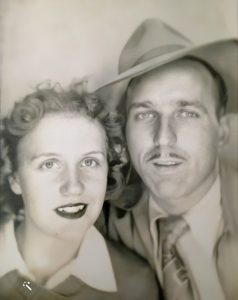
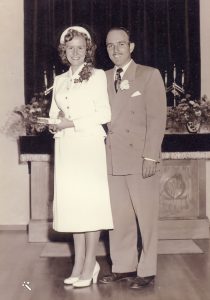 As kids, my sisters and I probably took our parents for granted, but when we look at how hard they worked to make life great for us, it almost brings tears to my eyes. My parents, Al and Collene Spencer worked very hard to give us a good life. They made sure that we got to take vacations…always wanting to make sure we saw this great nation we live in. And it wasn’t just the vacations. It was the kind of home they made for us. No matter what, we always knew that we were all equally loved. We knew that love had nothing to do with whether or not we made mistakes, or even if we got into trouble. In those days, children were spanked to teach proper manners. I know that many people these days disagree with that type discipline, but it was the era we lived in. In those days, children knew that if the neighbor told you to quit tearing something up, you had better quit. There was a measure of respect for our elders and those in authority. I miss that in our world today. Although, I live in a neighborhood, where most of the kids are respectful. We are blessed to live where we do.
As kids, my sisters and I probably took our parents for granted, but when we look at how hard they worked to make life great for us, it almost brings tears to my eyes. My parents, Al and Collene Spencer worked very hard to give us a good life. They made sure that we got to take vacations…always wanting to make sure we saw this great nation we live in. And it wasn’t just the vacations. It was the kind of home they made for us. No matter what, we always knew that we were all equally loved. We knew that love had nothing to do with whether or not we made mistakes, or even if we got into trouble. In those days, children were spanked to teach proper manners. I know that many people these days disagree with that type discipline, but it was the era we lived in. In those days, children knew that if the neighbor told you to quit tearing something up, you had better quit. There was a measure of respect for our elders and those in authority. I miss that in our world today. Although, I live in a neighborhood, where most of the kids are respectful. We are blessed to live where we do.
Mom and Dad met through her sister, Virginia Beadle, and my mom told me that it was love at first sight. She said that she tole herself that he was the most handsome man she had ever seen. Mom was still a school girl, but as soon as she could, she and Dad were married. Dad was older than mom by twelve years, a common thing in those days. He had fought in World War II, and was ready to settle down and have a family. They married and moved to Superior, Wisconsin as part of their honeymoon. My older sister, Cheryl Masterson arrived ten months after their marriage, and their family was started. I followed almost two years later, and we moved to Casper, Wyoming a couple of years later. Caryl Reed followed three years after me, Alena Stevens two years after Caryl, and Allyn Hadlock two years after Alena. Our family was complete. Dad was always outnumbered, but his girls were his little princesses. He was always patient, understanding of the needs of girls…understanding girls was a necessity for Dad.
Mom and Dad were together for 54 years of marriage before Dad’s passing on December 12, 2007. Mom 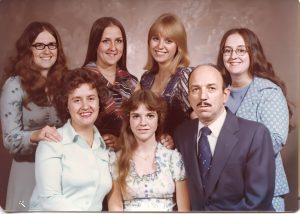
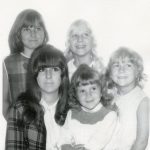 followed Dad on February 22, 2015, and now they are together again in Heaven. I’m sure they are enjoying Heaven and being together again. We miss them, but I can’t wish them back here. They would be horrified at what our world has become. Instead, we will go to join them someday, because Heaven is wonderful and we will all be happy together again, when we join them there. Today would have been Mom and Dad’s 67th Wedding Anniversary. Happy anniversary in Heaven, Mom and Dad. We love and miss you very much.
followed Dad on February 22, 2015, and now they are together again in Heaven. I’m sure they are enjoying Heaven and being together again. We miss them, but I can’t wish them back here. They would be horrified at what our world has become. Instead, we will go to join them someday, because Heaven is wonderful and we will all be happy together again, when we join them there. Today would have been Mom and Dad’s 67th Wedding Anniversary. Happy anniversary in Heaven, Mom and Dad. We love and miss you very much.

